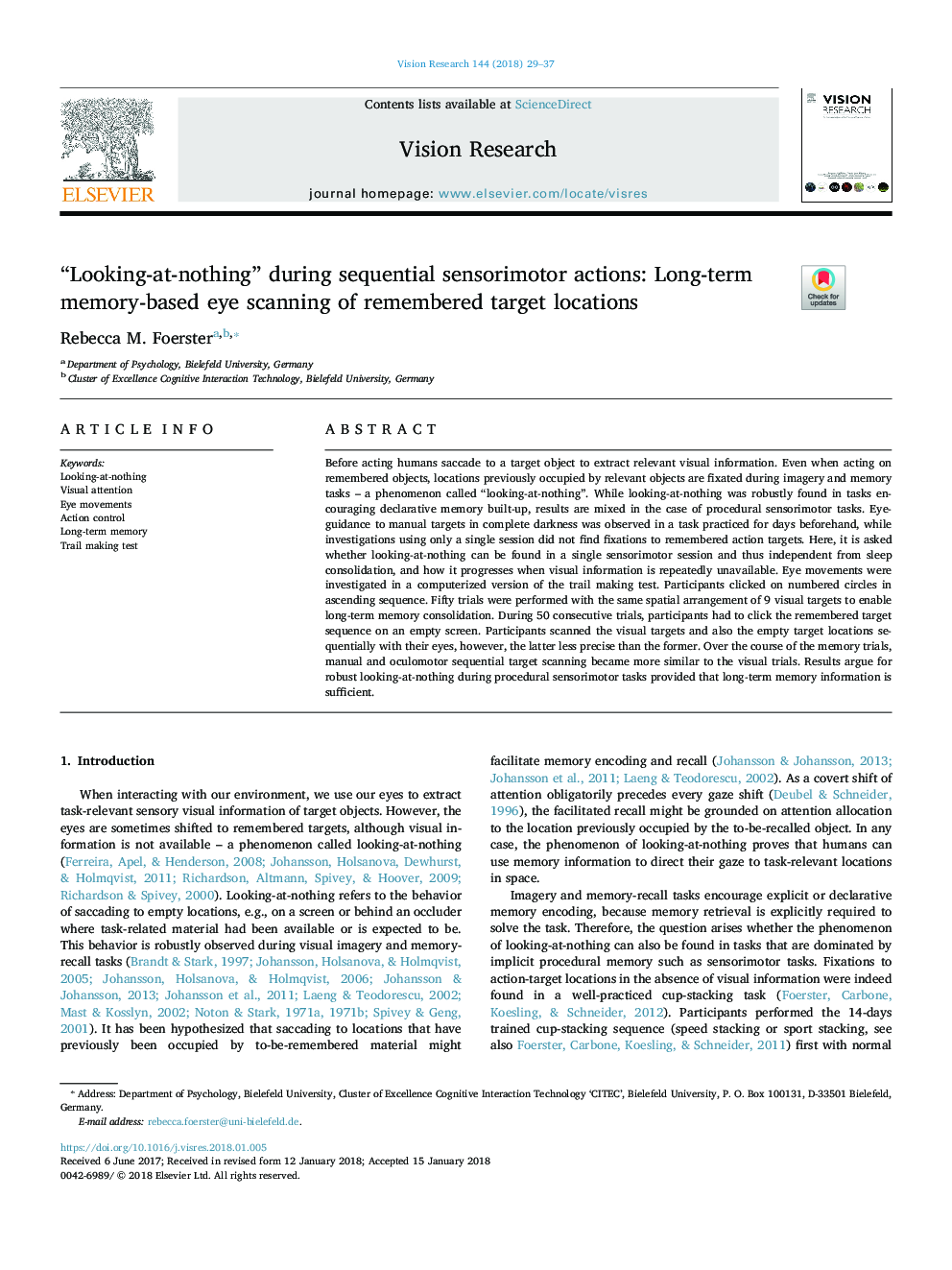| Article ID | Journal | Published Year | Pages | File Type |
|---|---|---|---|---|
| 8795318 | Vision Research | 2018 | 9 Pages |
Abstract
Before acting humans saccade to a target object to extract relevant visual information. Even when acting on remembered objects, locations previously occupied by relevant objects are fixated during imagery and memory tasks - a phenomenon called “looking-at-nothing”. While looking-at-nothing was robustly found in tasks encouraging declarative memory built-up, results are mixed in the case of procedural sensorimotor tasks. Eye-guidance to manual targets in complete darkness was observed in a task practiced for days beforehand, while investigations using only a single session did not find fixations to remembered action targets. Here, it is asked whether looking-at-nothing can be found in a single sensorimotor session and thus independent from sleep consolidation, and how it progresses when visual information is repeatedly unavailable. Eye movements were investigated in a computerized version of the trail making test. Participants clicked on numbered circles in ascending sequence. Fifty trials were performed with the same spatial arrangement of 9 visual targets to enable long-term memory consolidation. During 50 consecutive trials, participants had to click the remembered target sequence on an empty screen. Participants scanned the visual targets and also the empty target locations sequentially with their eyes, however, the latter less precise than the former. Over the course of the memory trials, manual and oculomotor sequential target scanning became more similar to the visual trials. Results argue for robust looking-at-nothing during procedural sensorimotor tasks provided that long-term memory information is sufficient.
Related Topics
Life Sciences
Neuroscience
Sensory Systems
Authors
Rebecca M. Foerster,
